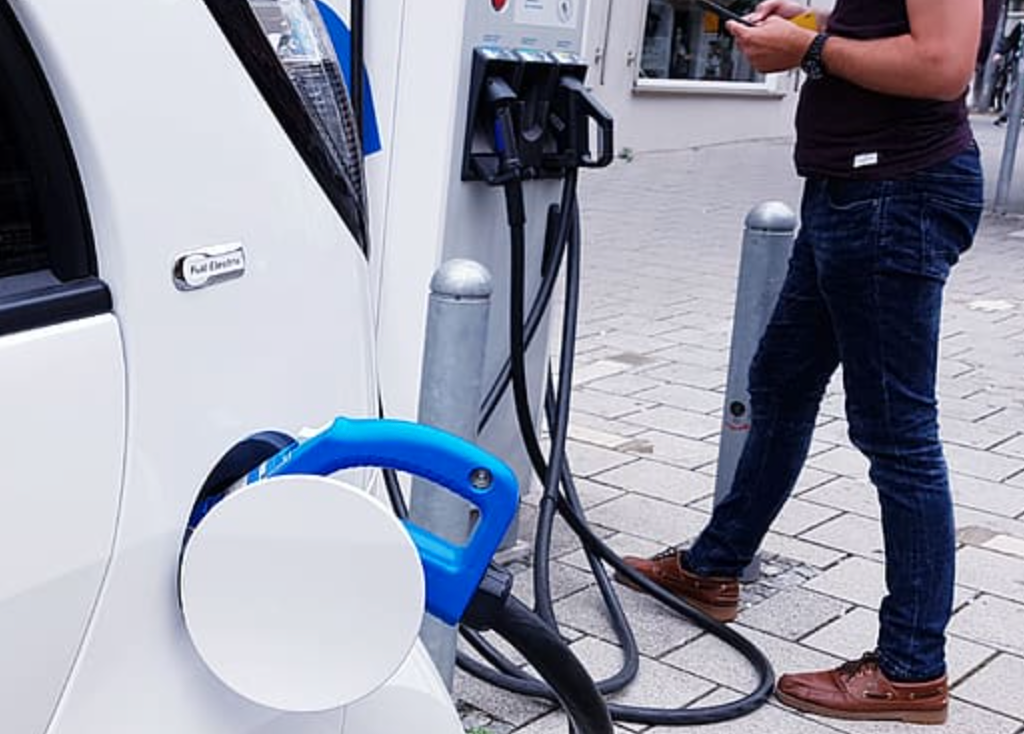Editor’s note: The opinions expressed by our op-ed writers do not necessarily reflect the opinions of the Streetsblog editorial board.
Electric vehicles are frequently touted as a silver bullet to address climate change, and while they are part of the equation, EVs are not the end-all be-all solution. Like anything, EVs have pros and cons.
For instance, the batteries to run EVs require several natural minerals such as Nickel, Lithium, Cobalt, Copper and Rare Earth metals (Neodymium and Dysprosium). The mining of these minerals — be it through drilling or removing the top soil and creating a leaching pond — result in toxic waste left behind as collateral damage. Efforts to extend time between charges has also make EVs heavier, meaning they require more energy to run.
There is also the issue of producing the electricity needed to charge electric vehicles. Power can come from renewable sources like natural gas, solar or wind energy, but it cannot negate the approximately 470 million short tons of coal consumed within the U.S. electric power sector. Indeed, EVs are still better for the environment than gasoline-powered vehicles, but they still have an impact on the environment.
Ultimately, our hope that EVs are the easy solution to combat climate change must shift to a reality that pairs EVs with other sustainability efforts. In the end, moving the needle on climate change requires behavioral change away from single occupancy vehicles and toward shared use mobility for at least part of journeys.
What drives car use over transit?
Jump-starting the shift away from our reliance on cars is possible if we work to understand why people choose personal vehicles versus public transportation in the first place. Convenience is a major factor for personal vehicle usage. Well before the pandemic pushed riders away from public transit, issues like infrequent service availability, unpredictable schedules and lack of reliability had been deterrents to using transit as a daily commute option in many areas, particularly outside of dense cities.
When paired with the decreases in public transit ridership realized during the pandemic, it is apparent that transit agencies need to take a strategic approach to balancing reliability with demand on the network, leveraging data to understand gaps in service, and implementing innovative solutions like demand responsive transport to keep people moving. Employing innovative, technology driven solutions will allow agencies to offer greater convenience and reliability to attract riders back to shared mobility and public transit and away from personal vehicle use.
Using technology for transparency and convenience
Let’s face it, occasional departure setbacks are unavoidable. But there are options to assist transit agencies in delivering greater reliability for riders using public transport everyday. For example, ensuring clear and frequent communication with customers is essential, and employing methods like text and email alerts to help riders plan or pivot journeys can go a long way toward increasing the trust factor of public transit.
Using digital mobility tools to integrate multi-modal transport for management and systems operations can also optimize the transport network for faster and more sustainable transport. Taking a systems approach can help to rebalance supply and demand, ensure users can access the mobility system easily and make certain trips are executed consistently.
Transit agencies can also make the bus or the train more cost efficient by offering modern fare payment options to riders. Removing the friction of reloading a transit card or using single-use fares by employing account-based ticketing models and open loop payments streamlines how riders pay across modes of transport. This makes public transit more sustainable into the future. In addition, policies like fare capping encourage ridership through daily or weekly caps on transit costs. When the limit is met, the rider can use the system for free for the remainder of the seven-day period. These fare policies enabled by technology means riders always get the best fare — again helping to boost trust in the transit system.
These changes may be the incentives that many riders need to choose public transit when running daily or weekly errands. The more that public transit is seen as a reliable, cost effective option, the more people will create habits that include shared mobility rather than single occupancy vehicles.
EVs aren’t the answer, but the solution is within our grasp
Solving the climate crisis will require a shift away from single occupancy vehicles — a long time mainstay in American culture. The proliferation of cars is why most of the efforts toward sustainable transportation are currently centered around EVs. The introduction of the EV gave some people hope that we were progressing toward a solution to transportation’s environmental problems.
Yes, EVs have their place in sustainability efforts, but we should regard them as one tool, among many others, that can be used for the purpose of increasing environmentally conscious transport. Building a future where travel is sustainable and earth-friendly means that people must reevaluate their use of personal vehicles, even if it’s only for a small portion of their journey. Will you be part of the solution?
The post Opinion: Electric Vehicles Are Only Part of the Climate Solution appeared first on Streetsblog New York City.






